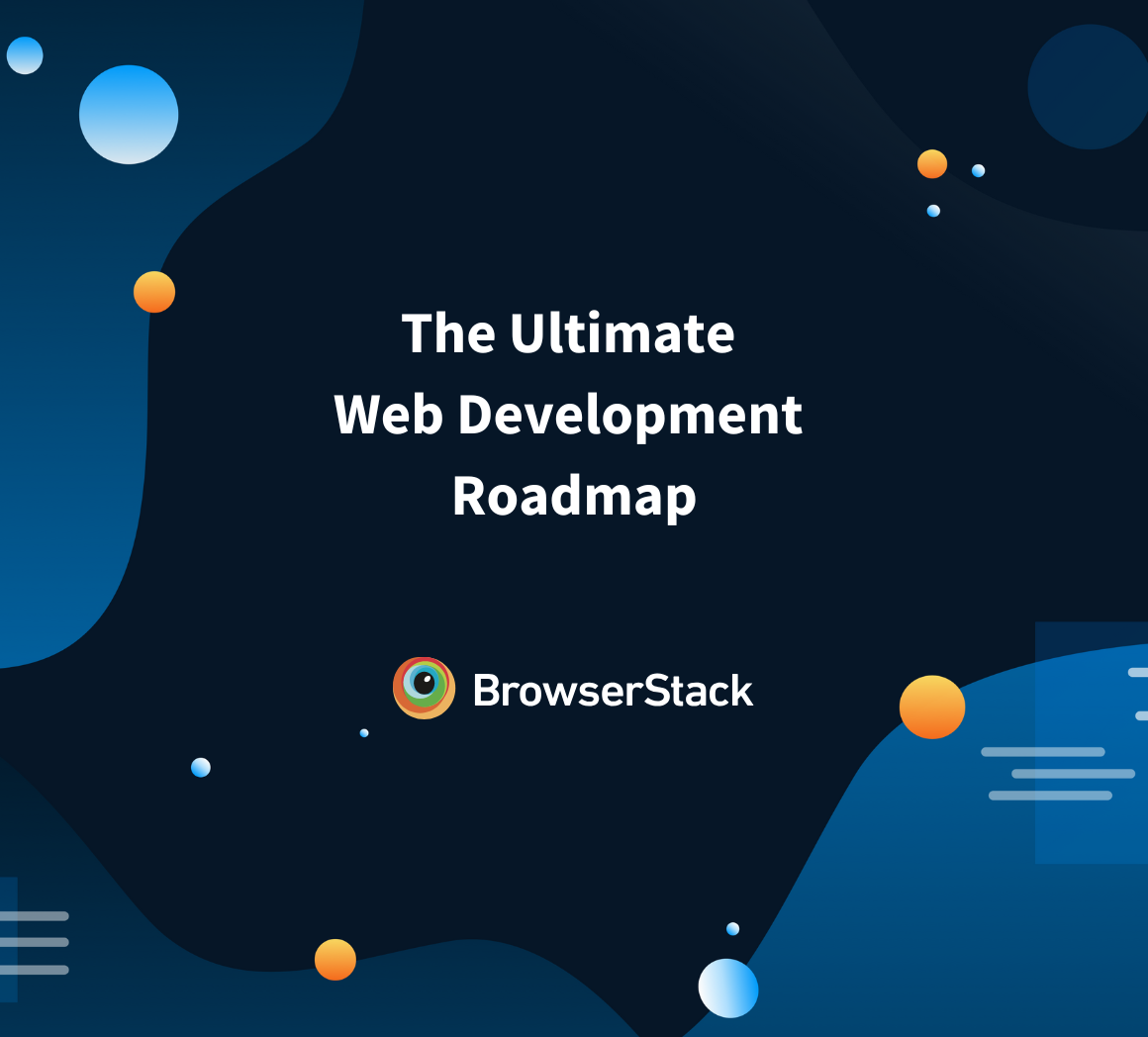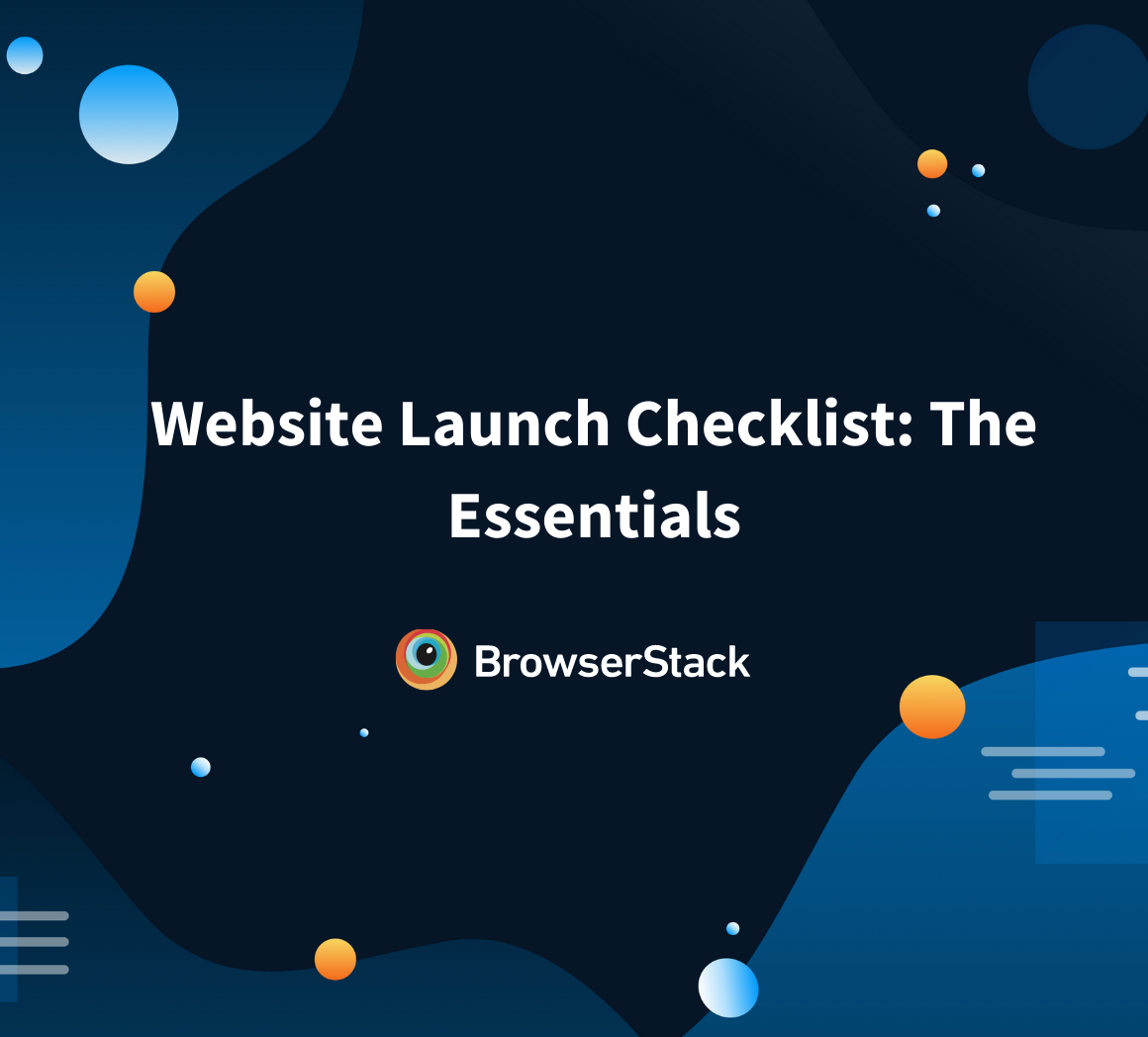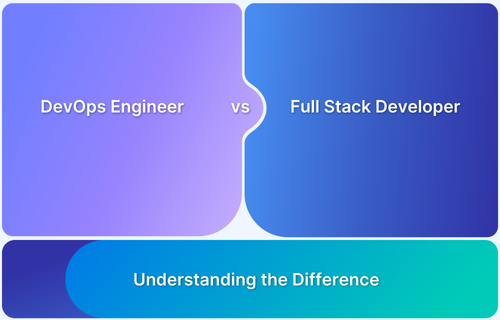Full stack development combines front-end and back-end technologies to build complete web applications.
Overview
What is Full Stack Development?
Full stack development refers to the process of working on both the client-side (front end) and server-side (back end) of a web application. It involves creating, managing, and deploying all layers of a software solution.
Importance of Full Stack Development
Full stack developers streamline workflows by handling end-to-end development. They bring flexibility, faster project turnaround, and a holistic understanding of application architecture.
Full Stack Web Development Tools:
- Front-end: HTML, CSS, JavaScript, React, Angular, Bootstrap
- Back-end: Node.js, Python, Java, PHP, Express, Django
- Databases: MySQL, MongoDB, PostgreSQL
- Version Control: Git, GitHub
- Other Tools: REST APIs, npm, DevTools, Docker
This article gives a detailed overview of what is full stack web development and everything that you need to know about it.
What is Full Stack Development?
Full-stack development is the process of planning and creating both the front-end (client-side) and back-end (server-side) elements of a web application.
While back-end development deals with managing the server-related elements of the website, such as database administration, API development, and more, front-end development concentrates on creating engaging user interfaces and providing a rich user experience.
Who is a Full Stack Developer
A full-stack developer is a person who can carry out both duties independently eliminating the need to hire two distinct developers—the front-end developer and the backend developer who are recruited for separate responsibilities while constructing an application.
Importance of Full Stack Development
Full stack development plays a critical role in modern web and software development, offering flexibility, efficiency, and faster project delivery.
Here’s why full stack development is important:
- Versatility: Full stack developers can handle both front-end (UI/UX) and back-end (server, database) tasks, enabling smooth integration and communication between layers.
- Faster Development: With a single developer or unified team managing both ends, project timelines shorten and coordination improves.
- Cost Efficiency: Companies save on hiring separate front-end and back-end teams, reducing overheads especially for startups or small businesses.
- Better Troubleshooting: Full stack developers understand the full architecture, making it easier to debug and optimize performance across the entire stack.
- Adaptability: They can switch between tasks as needed—building new features, fixing bugs, or optimizing performance—making them ideal for agile environments.
Also Read: Web Frameworks: All You Should Know About
Languages for Full Stack Web Development
A full-stack developer is generally hired for small-scale projects, however, for larger-scale web applications, the efficient procedure is to utilize different developers for different roles. In full stack development, there is the freedom to combine several programming languages based on how well they work together.
JavaScript is one of the best options available to developers for full-stack development since it is one of the few languages that can be utilised on both the front end and the back end. This feature of JavaScript enables it to capture seamless communication between the client and the server.
Some of the popular languages used for developing the front end of websites are HTML, CSS, JavaScript, ReactJS, VueJS, and more, however, for developing backend are Python, NodeJS, Java, Ruby, and more.
There are also several stacks available such as MERN stack, MEAN stack, Ruby on Rails, and more which makes the entire development lifecycle smooth and convenient.
Also Read: How to build a website using HTML and CSS
Frameworks for Full Stack Web Development
A framework is a reusable set of components that accelerates development by offering libraries, compilers, debuggers, and APIs, improving code quality, reducing build time, and supporting software security.
Below are some key frameworks for full-stack web development:
- Ruby on Rails: Written in Ruby, Rails is known for its Convention over Configuration (CoC) and Don’t Repeat Yourself (DRY) principles. It supports full-stack development with built-in tools for routing, controllers, views, and database management.
- Django: A Python-based framework ideal for rapid development with a batteries-included approach, Django offers everything developers need, making it useful for scalable applications and compatible with data-intensive tasks like machine learning.
- Spring Boot: A Java framework that simplifies the setup for production-ready applications by reducing boilerplate code, making it a strong choice for complex, enterprise-level projects.
- Laravel: A PHP framework known for its elegant syntax and ease of use, Laravel provides rich functionality (e.g., ORM, routing, authentication) that streamlines web application development and maintenance.
Full Stack Web Development Tools
A web application’s effectiveness is the result of a number of technologies, frameworks, and tools working together. A developer must be aware of the technologies that go behind creating the front end and back end of the websites respectively. Here are some of the full stack web development tools that you may use in your next project.
1. Front End Tools
Front-end development focuses on the user interface and experience, everything users see and interact with.
Core Technologies:
- HTML: Structures web pages using markup tags.
- CSS: Styles HTML elements and enables responsive design.
- JavaScript: Adds interactivity and dynamic functionality to websites.
Must Read: How to Create a Website using HTML and CSS
Popular Libraries & Frameworks:
- React.js: Component-based JavaScript library for building user interfaces.
- AngularJS: JavaScript framework for creating dynamic single-page applications.
- Bootstrap: Framework for building responsive, mobile-first web pages using HTML, CSS, and JS.
- jQuery: Simplifies DOM manipulation, event handling, and Ajax interactions.
- SASS: CSS preprocessor that adds features like variables and nesting.
Also Read: VueJS vs AngularJS: Core Differences
Additional Tools:
- Version Control: Git, GitHub
- Package Managers: npm, Yarn
- Text Editors: VS Code, Sublime Text, Atom
- Browser DevTools: Chrome DevTools for debugging and performance analysis
- APIs: Using REST, GraphQL, and tools like Axios to fetch data
2. Back-End Tools
Back-end development handles server-side logic, databases, and application architecture—everything users don’t see but powers the application.
Programming Languages:
- Node.js: Executes JavaScript server-side; ideal for scalable backend services.
- Python: Known for simplicity and used with frameworks like Django and Flask.
- Java: Scalable and robust, often used in enterprise applications.
- PHP: Server-side scripting language for web applications.
- C++/C#: Used in systems programming and backend services.
Frameworks:
- Express (Node.js): Minimalist framework for building APIs.
- Django (Python): High-level framework for rapid development.
- Spring (Java): Enterprise-grade backend framework.
- Laravel (PHP): Elegant syntax and tools for backend PHP apps.
- Ruby on Rails: Convention-over-configuration framework for Ruby.
Other Key Considerations:
- Efficient data structuring and database management (SQL, NoSQL)
- Handling API requests/responses
- Ensuring data security and authentication
- Server configuration and deployment
Note: JavaScript plays a central role across full stack development, especially with the rise of Node.js for backend and React or Angular for frontend.
Front End vs Back End vs Full Stack Web Development
Below is an overview of the differences between front end, back end, and full stack web development.
| Feature | Front-End Development | Back-End Development | Full-Stack Development |
|---|---|---|---|
| Focus | User interface (UI) and design elements | Server logic, database interactions | Both client and server-side development |
| Core Languages | HTML, CSS, JavaScript | Java, Python, PHP, Ruby | Combines front-end and back-end languages |
| Key Tools & Frameworks | React, Angular, Vue.js | Django, Spring Boot, Express.js | Uses both front-end and back-end tools |
| Purpose | Ensures visual appeal and usability | Ensures data is processed and stored securely | Handles all aspects of web development |
Popular Tech stacks in full-stack development
A stack is a set of software tools that full-stack developers use together to build applications quickly. A typical stack includes an operating system, database, programming language, and web server.
- LAMP Stack: Combines Linux, Apache, MySQL, and PHP.
Process: The Apache server handles requests, passing dynamic ones to PHP. PHP then interacts with the MySQL database as needed, sending HTML output back to Apache for delivery to the user. - MEAN Stack: Comprises MongoDB, Express.js, Angular, and Node.js, based on JavaScript.
Process: Angular processes requests via Express.js, retrieves data from MongoDB, and returns JSON data to Angular, rendering it in the browser. Variants include MERN (React.js) and MEVN (Vue.js). - LEMP Stack: Includes Linux, Nginx, MySQL, and PHP.
Process: Nginx handles HTTP requests, directing them to PHP for processing. PHP interacts with MySQL if needed and sends the response back through Nginx to the user.
Role of Web Servers in Full Stack Development
Web servers are the backbone of full stack architecture, acting as the bridge between the client (front end) and the server-side logic (back end).
They handle HTTP requests, serve static and dynamic content, manage routing, and ensure secure, seamless communication between users and databases.
Key Functions of Web Servers:
- Request Handling: Accept and process incoming requests from the browser (client).
- Content Serving: Deliver HTML, CSS, JS, and image files to the client.
- Middleware Support: Enable authentication, caching, compression, and logging.
- Load Balancing: Distribute traffic across multiple servers to improve performance.
- API Management: Serve as the access point for RESTful or GraphQL APIs.
Popular Web Servers in Full Stack Development:
- Apache HTTP Server: Widely used open-source server for serving static and dynamic content.
- Nginx: High-performance server ideal for load balancing and reverse proxy.
- Node.js (with Express): Used to build custom servers and APIs in JavaScript.
- Microsoft IIS: Server used with ASP.NET for Windows-based hosting.
In full stack projects, understanding web server configuration and deployment (e.g., via Nginx or Node.js) is essential for building scalable and reliable applications.
How to Become a Full Stack Developer
Becoming a full stack developer involves mastering both front-end and back-end technologies, along with essential tools and workflows.
Steps to Become a Full Stack Developer:
- Learn the fundamentals of HTML, CSS, and JavaScript.
- Gain hands-on experience with front-end frameworks like React or Angular.
- Learn a back-end language such as Node.js, Python, Java, or PHP.
- Understand how to build and consume APIs.
- Work with databases like MySQL, PostgreSQL, or MongoDB.
- Use version control tools like Git and platforms like GitHub.
- Learn the basics of deployment, DevOps, and cloud services.
- Build and deploy real-world full stack projects.
- Stay updated with the latest technologies and development trends.
- Pursue certifications or online courses to validate your skills.
Advantages of Full Stack Web Development
The scope of full-stack development has expanded significantly with advancements in the technology industry. In earlier stages, developers often bypassed creating a backend, hard coding everything directly into the front end. However, web development has evolved considerably since then.
Below are some key advantages of full stack web development:
- Economical: A full-stack developer is hired when you’re working on a small-scale project. As a result, you won’t need to hire additional developers because the full-stack developer has all the necessary skill sets.
- Efficiency: A system is more effective when there is less misunderstanding among the project’s stakeholders. Since a full-stack developer also reduces communication among the other project specialists, this results in a more coordinated and effective development process.
- Issue resolving: An application designed by a full-stack developer may interact easily with the front and back ends of the website since they have a thorough grasp of what they are doing. As the entire project is produced by a single developer, it also makes the process of fixing any flaws that are present in the project easier to identify.
Limitations of Full Stack Web Development
Below are some disadvantages and limitations of full-stack web development:
- Due to their broad skillset, full-stack developers may lack deep expertise in specific areas, which can be limiting when specialized knowledge is needed.
- Keeping up with multiple technologies requires ongoing learning, demanding more time than roles focused on a single tech area.
- Managing both front-end and back-end can add complexity and extend timelines, making full-stack development less suitable for small projects or tight deadlines.
Full Stack Web Development Best Practices
Best Practices help you utilize full stack web development to its maximum potential. Here are some of the best practices in Full Stack Web Development you can use to construct a reliable script that will enable you to build a website that is both functional and aesthetically pleasing.
- Planning: A project that has been carefully planned out before it begins helps to create a clear direction towards the requirements of the project’s resources, such as time, budget, and team members, which improves the project’s overall efficiency. Additionally, making extra decisions in advance, such as selecting the appropriate stack, tools, and technologies, may be very helpful in handling any mid-project crises.
- Maintainability: When creating, it’s important to keep in mind that maintainable code makes it easier to update any script in the future. Writing clear, succinct, and well-structured code will help you do this. To improve the quality of the code, one must also adhere to other coding standards and descriptive naming conventions.
- Secure Project: No script that might pose a security risk exists in an acceptable project. To fix this, the project’s frameworks and libraries must be updated on a regular basis, and appropriate authorisation and authentication methods must be developed.
- Testing: The process of testing determines if the resultant product functions as planned. Before releasing your product to actual people, it is crucial to test it in a variety of situations. To guarantee the optimum functioning of an application, functional tests, unit tests, integration tests, and end-to-end tests must be preferred.
It is always a best practice to the website on real devices and frameworks for better accuracy. Real device cloud like BrowserStack can help you test your website comprehensively. - Responsiveness: Everyone requires accessible and responsive website to reach a wider audience. With the device fragmentation, and considering the user diversity, Responsiveness and Accessibility are the key factors to deliver a best in class website. This helps cater to a larger audience.
Conclusion
Full stack development opens the door to the possibility of a single developer taking charge of the entire application. It eases the communication among the stakeholders of the project Moreover, since a single developer is capable of creating the application it also eases the process of resolving issues present in the project as the developer is aware and adapted to the technologies used in it.
This article discussed several approaches a person must keep in mind while developing the entire application to leverage its development experience. Some popular tools and technologies for full stack development are MEAN stack and MERN stack. The key feature behind their implementation is that they are easy to learn and use in production. They are backed by solid community support which eases the journey as we advance in it.







